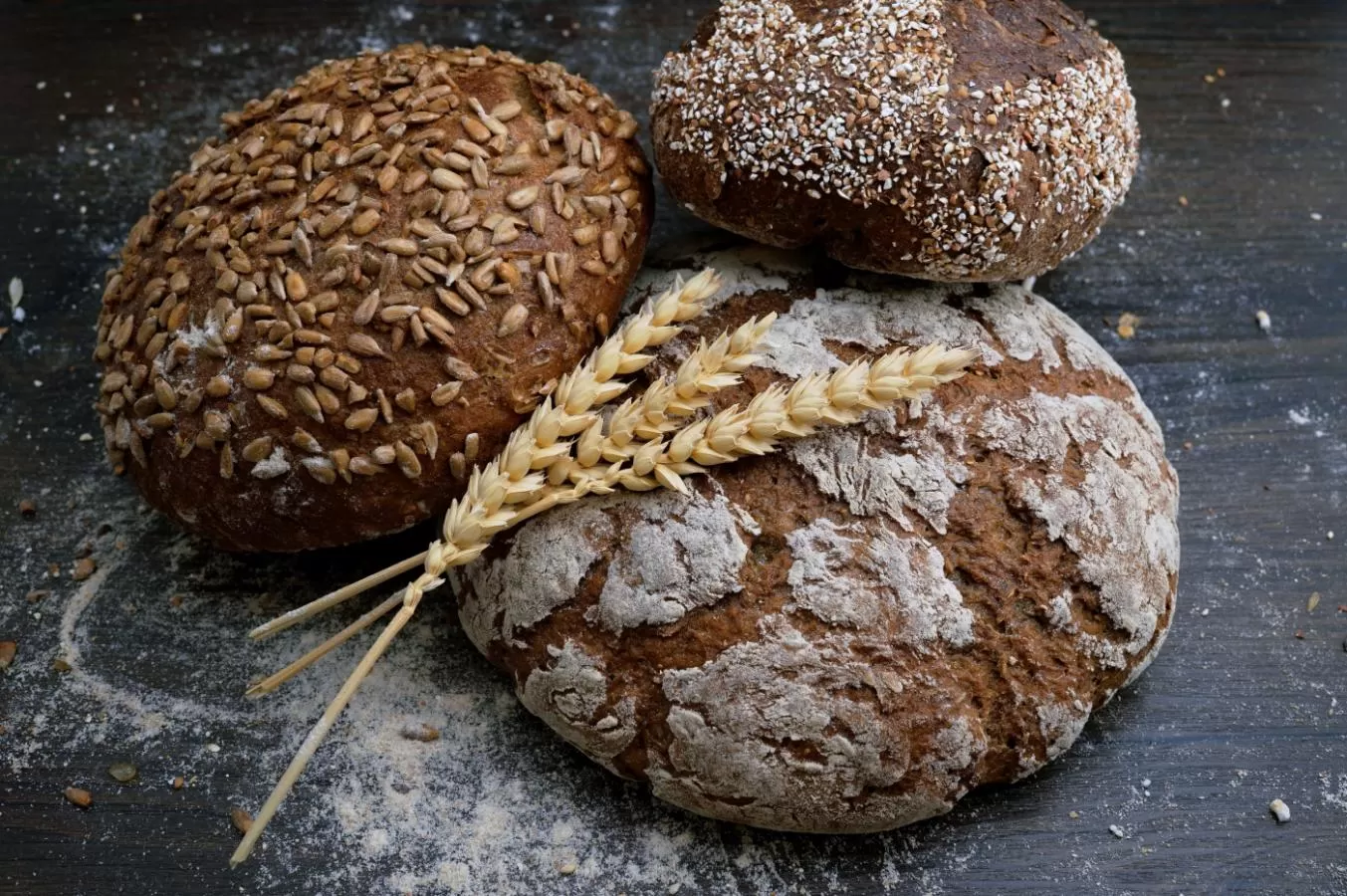How to Choose a Healthy Bread
Published: 05/18/2018

Eating more whole grain foods makes sense.
Higher whole grain consumption is associated with lower total and cardiovascular mortality in U.S. men and women, independent of other dietary and lifestyle factors. (1)
Results from some observational studies suggest that higher whole grain intake is associated with lower risk of weight gain. (2)
One scientific review suggests that there is evidence for dietary whole grain intake to be beneficial in the prevention of type 2 diabetes, cardiovascular disease, and colorectal, pancreatic, and gastric cancers. The potential benefits of these findings suggest that the consumption of 2 to 3 servings per day (~45 g) of whole grains may be a justifiable public health goal. (3)
The most recent Dietary Guidelines for Americans, released in January 2020, recommend that all adults eat at least half their grains as whole grains – that’s at least 3 to 5 servings of whole grains. Even children need 2 to 3 servings or more.
The 2020 Dietary Guidelines recommend meeting the daily requirement by eating three “ounce-equivalents” of breads, rolls, cereals or other grain foods made with 100% whole grains, or six “ounce-equivalents” made with an equal mix of whole and refined grain. A slice of bread or a serving of breakfast cereal usually weighs about an ounce.
Trying to choose a bread, cracker, english muffin or snack made with healthy whole grains can be confusing and overwhelming. Terms such as “whole grain”, “multigrain”, and “fiber” are on countless packages but this doesn’t always mean these products constitute a healthful and nutritious choice.
Some of these front label terms implies it is a good-for-you bread, but don't draw a conclusion yet.
When a product is labeled "grain" or whole grain", it means that only part of the product is made with 100% whole grain flours. So in looking at the front label we can't conclude yet that it is the healthiest choice. So turn the package around and look at the ingredient list. Keep in mind you're hoping that the first word is "whole".
If the first ingredient is "unbleached, enriched wheat flour", this is codeword for white, processed unhealthy flour.
To ensure you are getting a healthy 100% whole wheat bread, look at the ingredient list, not the front of the package.
Remember that the first item on the ingredient label is the one in the highest weight amount. Whole wheat flour or 100% whole wheat flour should be the first ingredient in the list.
Don't fall for words such as wheat flour, unbleached wheat flour, multigrain,enriched, stone-ground wheat flour. These are deceptive ways of saying processed refined white flour.
Here is an example of a healthy bread choice. This is the ingredient list of Dave's 21 Killer Bread:
INGREDIENTS:
Organic whole wheat (organic whole wheat flour, organic cracked whole wheat), water, organic cane sugar, organic 21 Whole Grains and Seeds mix (organic whole flax seeds, organic sunflower seeds, organic ground whole flax seeds, organic brown sesame seeds, organic triticale, organic pumpkin seeds, organic rolled barley, organic rolled oats, organic rolled rye, organic black sesame seeds, organic blue cornmeal, organic millet, organic rolled spelt, organic brown rice flour, organic amaranth flour, organic yellow cornmeal, organic KAMUT® khorasan wheat, organic quinoa, organic buckwheat flour, organic sorghum flour, organic poppy seeds), organic wheat gluten, organic oat fiber, contains 2% or less of each of the following: organic molasses, sea salt, yeast, organic vinegar, organic cultured wheat flour, enzymes, organic acerola cherry powder.
WHOLE should be a part of the first ingredient, such as: whole wheat flour, whole grain rye flour, or whole grain pumpernickel flour.
You can also check for the whole grain seal on the package. Some manufacturers have it and some don't.
To choose a healthy bread, look for these nutrition stats on the Nutrition Facts label:
- Calories: 100 or fewer per slice
- Fiber: 2 grams or more per slice
- Sodium: 225 mg or less per slice
- Protein: 4 grams or more per slice
- Fat: 2 grams or less and 0 grams of saturated fat
(1) Wu H, Flint AJ, Qi Q, van Dam RM, Sampson LA, Rimm EB, Holmes MD, Willett WC, Hu FB, Sun Q. Association between dietary whole grain intake and risk of mortality: two large prospective studies in US men and women. JAMA Intern Med. 2015 Mar;175(3):373-84. doi: 10.1001/jamainternmed.2014.6283. PMID: 25559238; PMCID: PMC4429593.
(2) Maki KC, Palacios OM, Koecher K, Sawicki CM, Livingston KA, Bell M, Nelson Cortes H, McKeown NM. The Relationship between Whole Grain Intake and Body Weight: Results of Meta-Analyses of Observational Studies and Randomized Controlled Trials. Nutrients. 2019 May 31;11(6):1245. doi: 10.3390/nu11061245. PMID: 31159235; PMCID: PMC6627338.
(3) McRae MP. Health Benefits of Dietary Whole Grains: An Umbrella Review of Meta-analyses. J Chiropr Med. 2017 Mar;16(1):10-18. doi: 10.1016/j.jcm.2016.08.008. Epub 2016 Nov 18. PMID: 28228693; PMCID: PMC5310957.
Categories: Food Weight Management
Tags: #healthyhabits
Active Nutrition is a participant in the Amazon Associates Program, an affiliate advertising program designed to provide a way for websites to earn advertising revenues by advertising and linking to Amazon. If you click on one of my recommended item links and then place an order through Amazon, I receive a small commission on that sale, at no extra expense to you of course. This is a way to support me and my work every time you shop at no cost to you.





